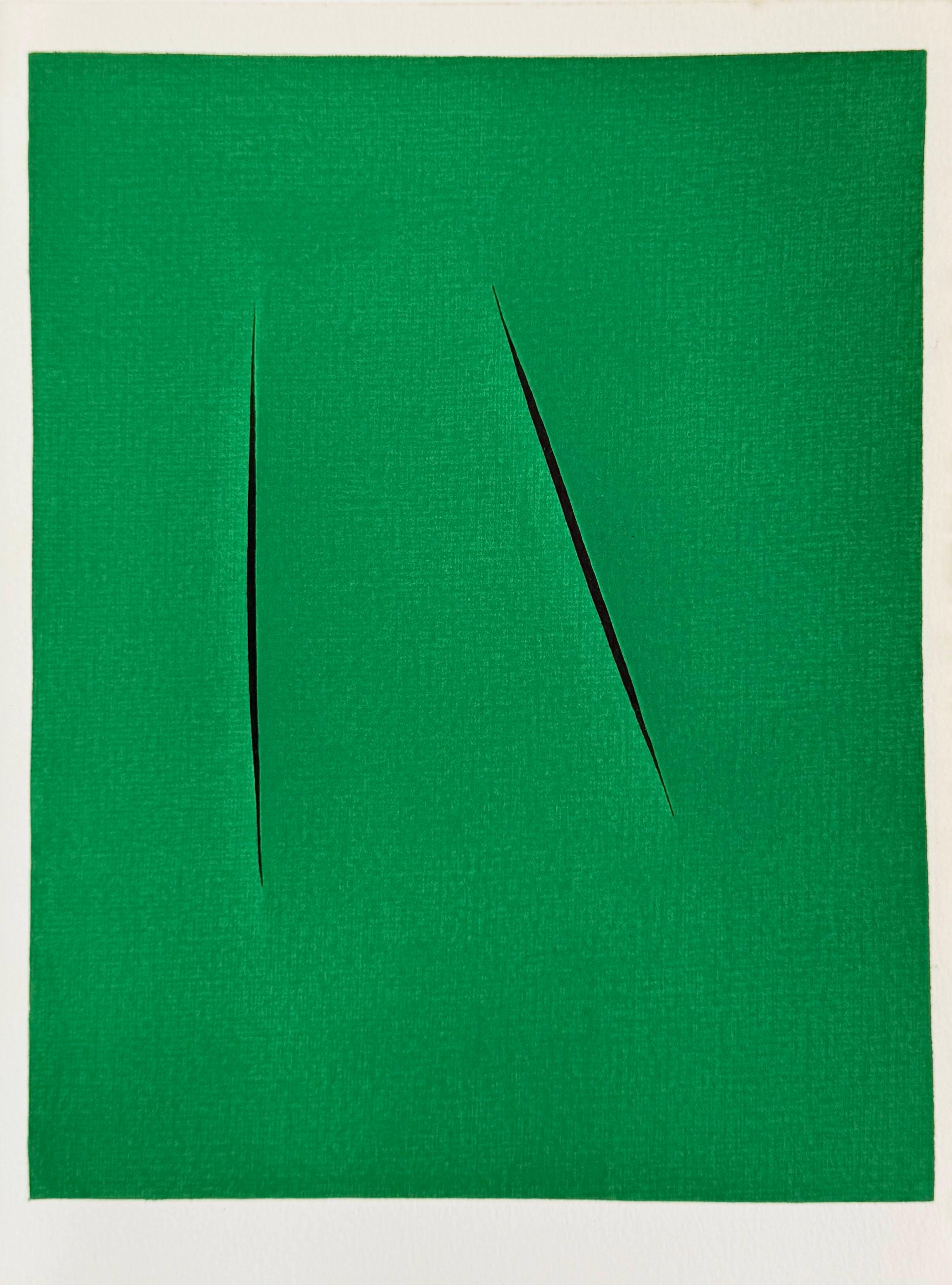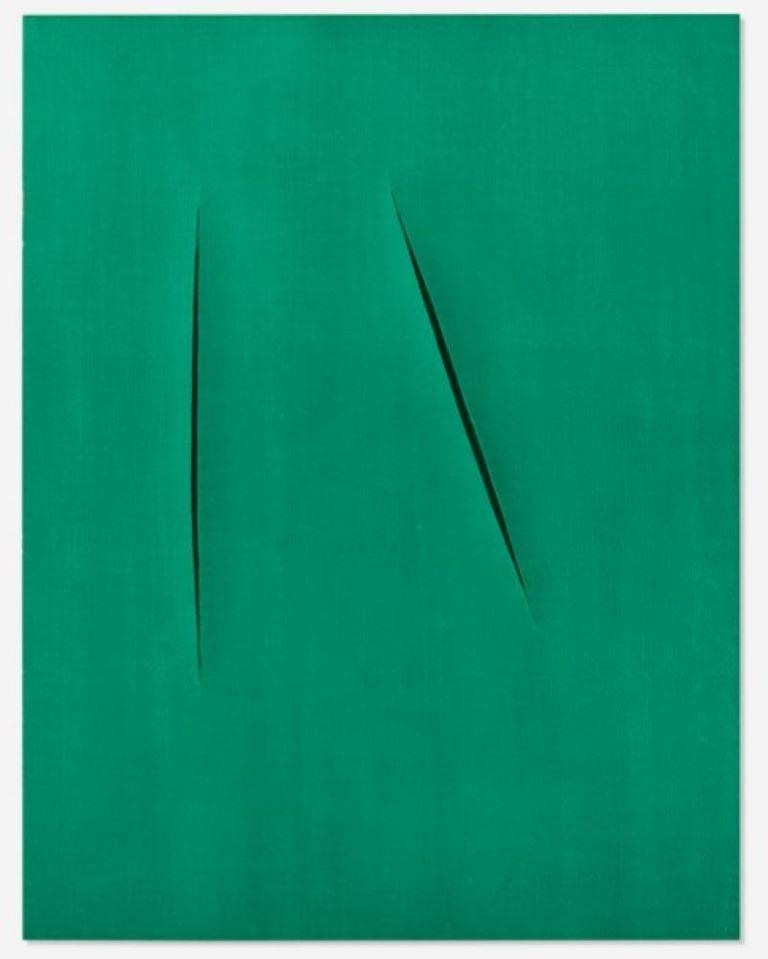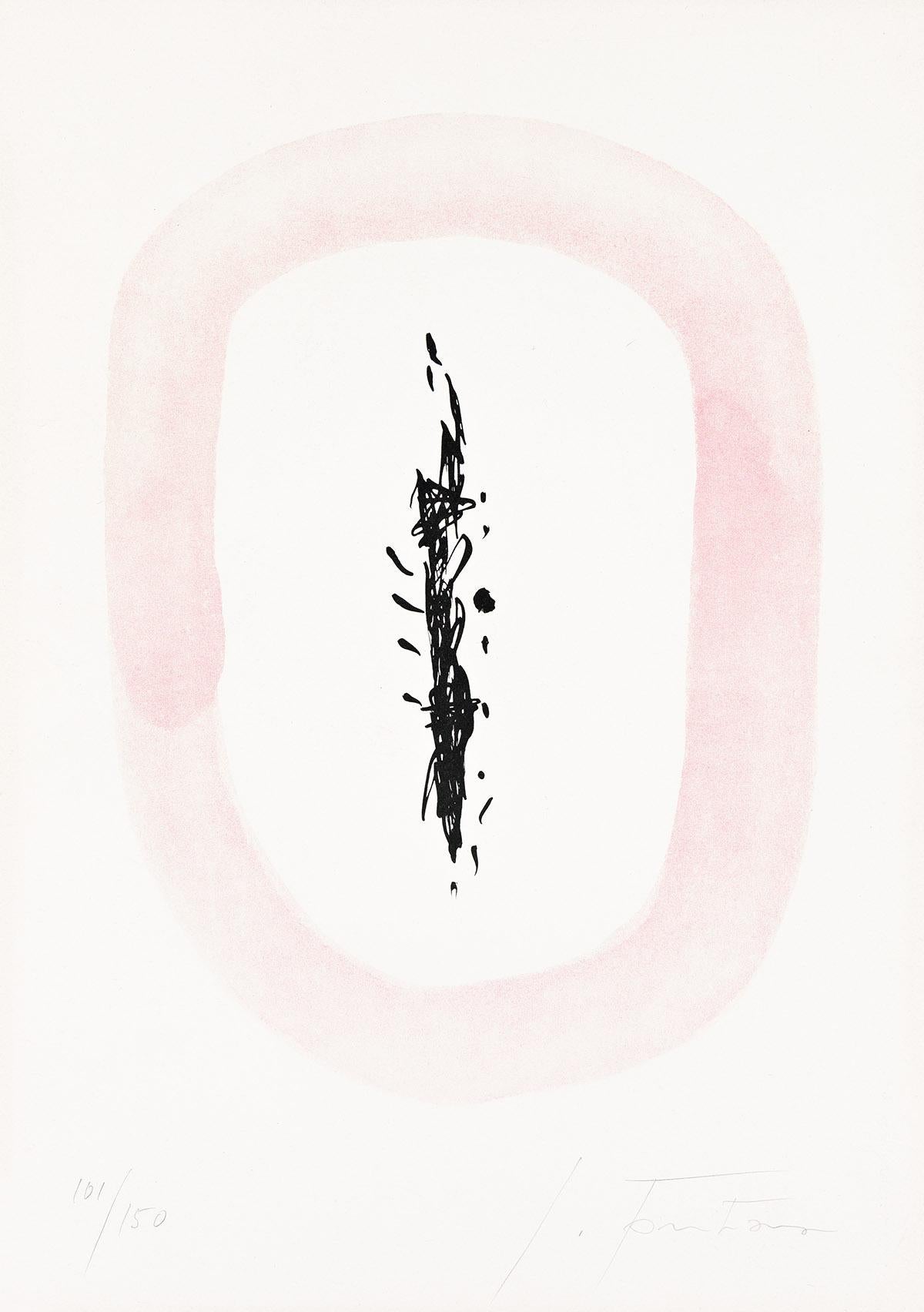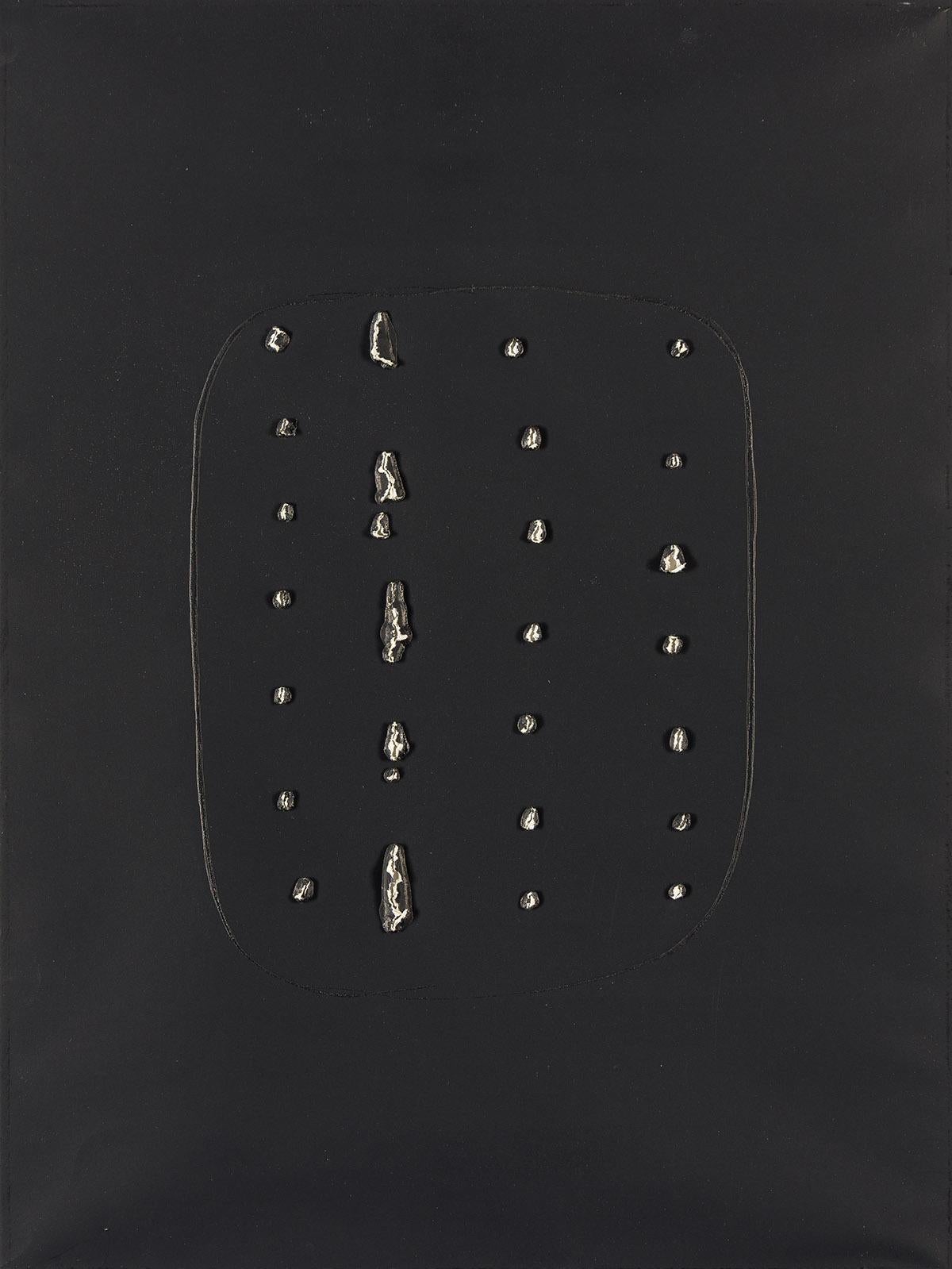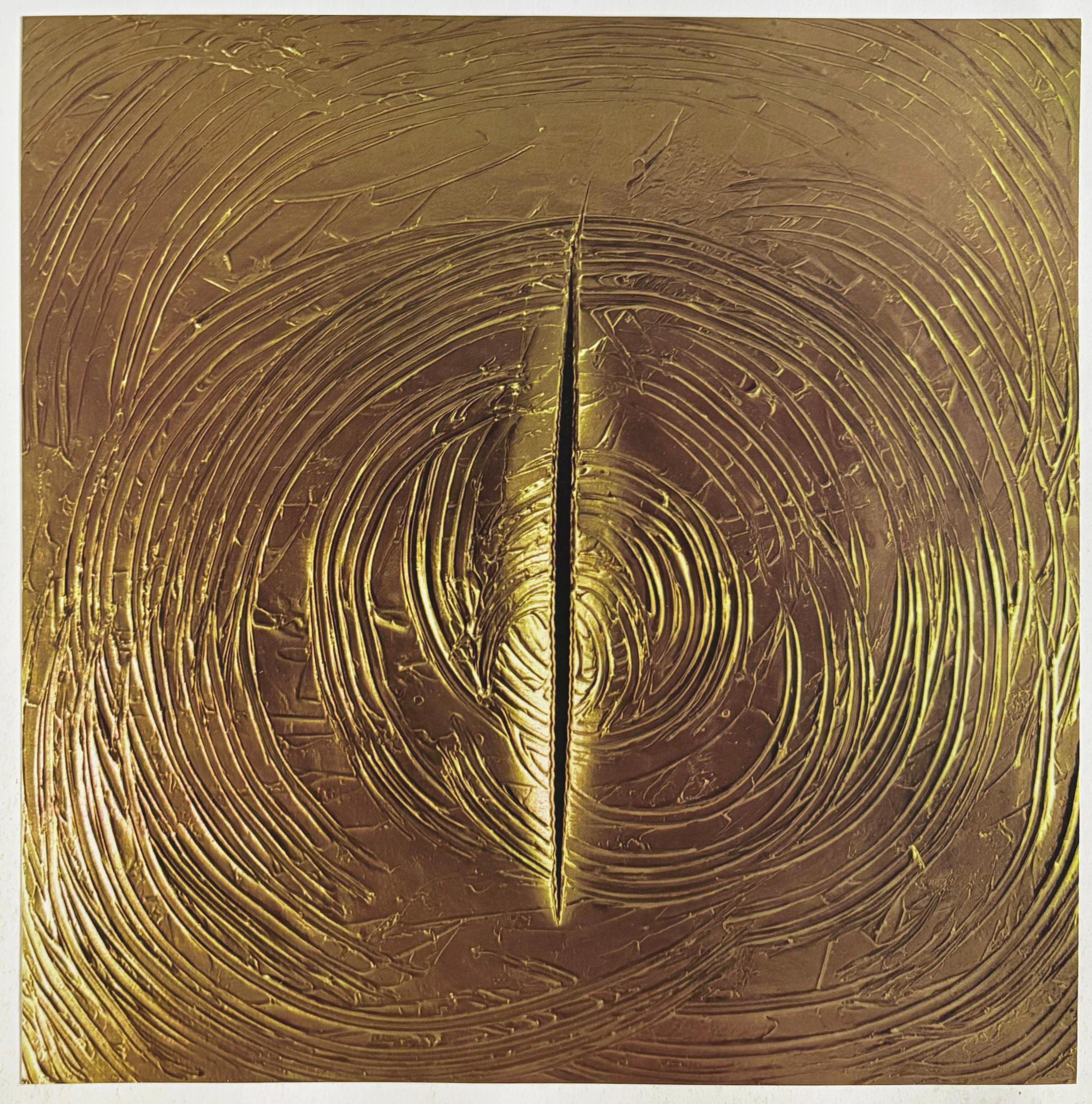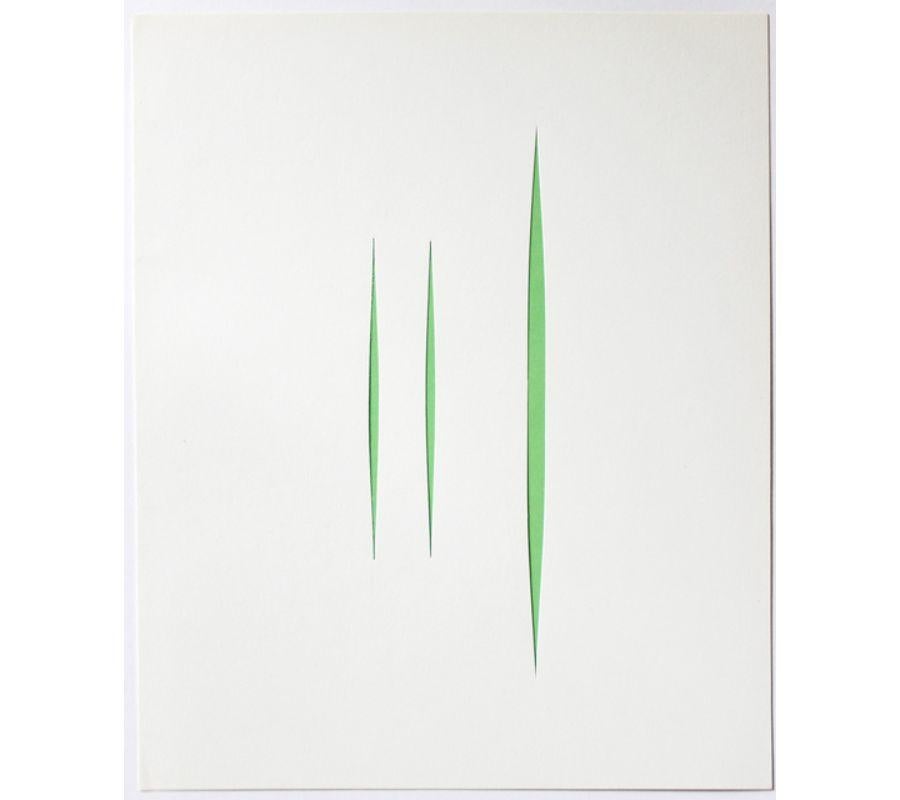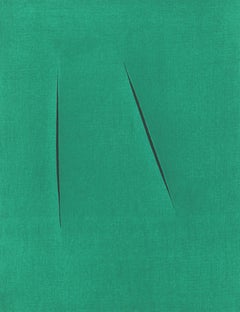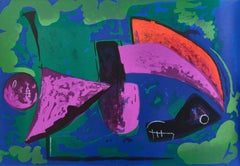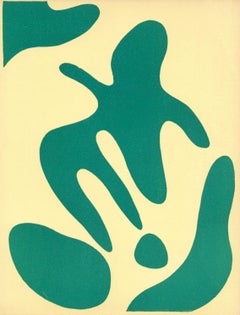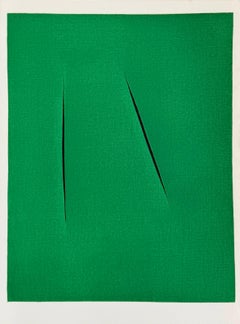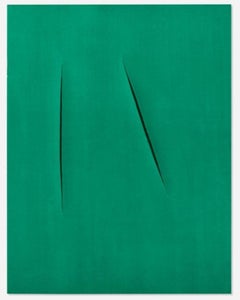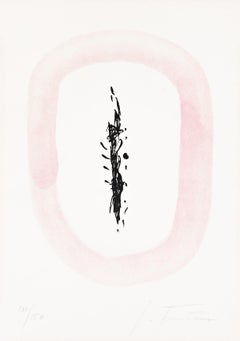Items Similar to Concetto Spaziale, Société internationale d'art XXe siècle
Want more images or videos?
Request additional images or videos from the seller
1 of 7
Lucio FontanaConcetto Spaziale, Société internationale d'art XXe siècle1959
1959
$10,396
$12,99520% Off
£7,850.10
£9,812.6320% Off
€9,046.38
€11,307.9820% Off
CA$14,673.17
CA$18,341.4720% Off
A$16,176.84
A$20,221.0520% Off
CHF 8,463.20
CHF 10,57920% Off
MX$198,459.79
MX$248,074.7320% Off
NOK 106,534.93
NOK 133,168.6720% Off
SEK 99,627.01
SEK 124,533.7620% Off
DKK 67,558.63
DKK 84,448.2920% Off
About the Item
Lithograph on vélin paper. Paper Size: 12.4 x 9.65 inches. Inscription: Unsigned and unnumbered, as issued. Notes: From the album, XXe siècle, Nouvelle série, XXIe Année, N°12 Mal-Juin 1959, Cahiers d'Art bi-annuels publiés sous la direction de G. di San Lazzaro, 1959. Published by Société Internationale d'Art XXe siècle, Paris, under the direction of Gualtieri di San Lazzaro, éditeur, Paris; rendered by Daniel Jacomet, Paris; printed by Daniel Jacomet et Cie, Paris, 1959. Additional notes: Excerpted from the academic article, “Promoting Original Prints, The Role of Gualtieri di San Lazzaro and XXe Siècle” by Valerie Holman, published in Print Quarterly, XXXIII, 2016, 2, Until recently very little has been written on the Italian author and art publisher Gualtieri di San Lazzaro (1904-75), yet for 50 years he chronicled the life and work of contemporary artists, produced monographs of exceptional quality, and disseminated original prints by modern painters and sculptors through his best-known periodical, XXe Siècle. Although still a relatively unfamiliar figure in the United Kingdom, San Lazzaro is one of the half-dozen great art publishers of the mid-twentieth century who, together with his exemplar, Ambroise Vollard (1866-1939), and those of his own generation, Christian Zervos (1889-1970), Tériade (1889-1983) and Albert Skira (1904-73), chose to base himself in Paris, seeing it throughout his life as the centre of the art world….XXe Siècle, an illustrated periodical, was launched in 1938 and printed in editions of approximately 2,000, each issue containing both photographs and four-colour separation reproductions across a wide spectrum of visual imagery ranging from masterpieces of Western painting to popular prints from the Far East. Its large format, lively design, and close integration of text and image, were immediately striking, but its most innovative feature, introduced at the suggestion of Hans Arp (1886-1966), was the inclusion of original prints by contemporary artists in every issue. With obvious appeal for collectors, XXe Siècle was also designed to introduce a wider, international public to contemporary painting and sculpture through good quality colour reproductions and the immediacy of original prints. Comparable in price to Cahiers d'Art, early issues of XXe Siècle sold out rapidly. While San Lazzaro's own aesthetic preferences tended towards lyric abstraction, he made clear that XXe Siècle was non-partisan [publication ceased during World War II]….in 1951, San Lazzaro relaunched XXe Siècle with thematic issues that were materials based, or centred on a topic of current interest in the visual arts, particularly in Europe: concepts of space, matter, monochrome, mark-making and the sign.' A defining feature of the new series was Italy's artistic dialogue with France for, while San Laz-zaro had originally concentrated on Paris-based painters and sculptors, his aim was to create an international network, to make known the work of French artists in Italy and Italian artists in France, and subsequently extend this bilateral axis to the English-speak-ing world. The artists represented in No. I by an original print were all best known as sculptors: Arp, Laurens, Henry Moore (1898-186) and Marino Marini, San Lazzaro not only sought to show readers the full range of an artist's work, but to encourage the production of prints, a stimulus much appreciated, for example, by Magnelli…. Suffering from failing health, in 1968 San Lazzaro lost overall control of XXe Siècle to Léon Amiel, a printer-publisher who had provided financial backing and helped with distribution in America." Thematic issues now ceased and were replaced by a 'panorama' of the year, but San Lazzaro was still active as a publisher of books and albums of prints….Shortly after his death, San Lazzaro himself was the subject of two exhibitions: 'Omaggio a XXe Siècle' in Milan in December 1974 centred on graphic work by those artists closest to him late in life, while 'San Laz-zaro et ses Amis' at the Musée d'Art Moderne de la Ville de Paris in 1975 featured work by all those whose work he had promoted for more than 50 years: Arp, Calder (1898-1976), Capogrossi, Chagall, Sonia Delau-nay, Dubuffet, Estève, Lucio Fontana (1899-1968), Gili-oli (1911-77), Magnelli, Marini, Miró, Moore and Poliakoff. This exhibition was seen by one of his closest colleagues as an indirect portrait of San Lazzaro, a complex man whose modesty and reserve masked his unremitting drive to extend international appreciation of contemporary art, and to bring the reading public closer to its making through the medium of print.
LUCIO FONTANA (1899-1968) was an Argentine-Italian painter, sculptor, and theorist. He is known as the founder of Spatialism and exponent of abstract painting as the first known artist to slash his canvases – which symbolizes an utter rejection of all prerequisites of art. His father was Italian and his mother Argentinean. He lived in Milan from 1905 to 1922 and then moved back to Argentina, where he worked as a sculptor in his father's studio for several years before opening his own. In 1926, he participated in the first exhibition of Nexus (formed in 1907), a group of young Argentinean artists in Rosario de Santa Fé. On his return to Milan in 1928, Fontana enrolled at the Accademia di belle arti di Brera, which he attended for two years. The Galleria del Milione, Milan, organized Fontana's first solo exhibition in 1930. In 1934, he joined the group of abstract Italian sculptors associated with the gallery. The artist traveled to Paris in 1935 and joined the group Abstraction-Création (Abstraction Creation, 1931–36). The same year, he developed his skills in ceramics in Albisola, Italy, and later at the Sèvres factory, near Paris. In 1939, he joined the Milanese anti-Fascist artists' group Corrente (Current, 1938–43). He also intensified his lifelong collaboration with architects during this period. In 1940, Fontana moved to Buenos Aires. With some of his students, he founded in 1946 the Academia de Altamira, from which emerged the "Manifesto blanco" (White manifesto, 1946). He moved back to Milan in 1947 and in collaboration with a group of writers and philosophers signed the "Primo manifesto dello spazialismo" (First manifesto of spatialism). He subsequently resumed his ceramic work in Albisola to explore these new ideas with his Concetti spaziali (Spatial concepts, 1949–60). The year 1949 marked a turning point in Fontana's career; he concurrently created his first series of paintings in which he punctured the canvas with buchi (holes), and his first spatial environment, a combination of shapeless sculptures, fluorescent paintings, and black lights to be viewed in a dark room. The latter work soon led him to employ neon tubing in ceiling decoration. In the early 1950s, he participated in Italian Art Informel exhibitions. During this decade, he explored working with various effects, such as slashing and perforating, in both painting and sculpture. The artist visited New York in 1961 during a show of his work at the Martha Jackson Gallery. In 1966, he designed opera sets and costumes for La Scala, Milan. In the last year of his career, Fontana became increasingly interested in the staging of his work in the many exhibitions that honored him worldwide, as well as in the idea of purity achieved in his last white canvases. These concerns were prominent at the 1966 Venice Biennale, for which he designed the environment for his work, and at the 1968 Documenta, Kassel, West Germany. In 2015, Lucio Fontana's painting, Concetto spaziale, La fine di Dio, sold for $29,173,000 USD at Christie's New York, setting a world record for the artist.
- Creator:Lucio Fontana (1899-1968, Italian)
- Creation Year:1959
- Dimensions:Height: 12.4 in (31.5 cm)Width: 9.65 in (24.52 cm)
- Medium:
- Movement & Style:
- Period:
- Condition:
- Gallery Location:Southampton, NY
- Reference Number:1stDibs: LU1465216672032
About the Seller
4.9
Platinum Seller
Premium sellers with a 4.7+ rating and 24-hour response times
Established in 1978
1stDibs seller since 2021
1,179 sales on 1stDibs
Typical response time: <1 hour
- ShippingRetrieving quote...Shipping from: Southampton, NY
- Return Policy
Authenticity Guarantee
In the unlikely event there’s an issue with an item’s authenticity, contact us within 1 year for a full refund. DetailsMoney-Back Guarantee
If your item is not as described, is damaged in transit, or does not arrive, contact us within 7 days for a full refund. Details24-Hour Cancellation
You have a 24-hour grace period in which to reconsider your purchase, with no questions asked.Vetted Professional Sellers
Our world-class sellers must adhere to strict standards for service and quality, maintaining the integrity of our listings.Price-Match Guarantee
If you find that a seller listed the same item for a lower price elsewhere, we’ll match it.Trusted Global Delivery
Our best-in-class carrier network provides specialized shipping options worldwide, including custom delivery.More From This Seller
View AllFontana, Concetto Spaziale, San Lazzaro et ses Amis, XXe siècle (after)
By Lucio Fontana
Located in Southampton, NY
Lithograph on vélin d'Arches paper. Paper Size: 14 x 10.5 inches. Inscription: Unsigned and unnumbered, as issued. Notes: From the album, San Lazzaro et ses Amis, Hommage au fondateu...
Category
1970s Modern Abstract Prints
Materials
Lithograph
$10,396 Sale Price
20% Off
Guerrier (Guastalla, LR), Société internationale d'art XXe siècle
By Marino Marini
Located in Southampton, NY
Lithograph on vélin paper. Paper Size: 12.4 x 19.3 inches, with centerfold, as issued. Inscription: Unsigned and unnumbered, as issued. Catalogue raisonné references: Guastalla, Gior...
Category
1960s Modern Abstract Prints
Materials
Lithograph
$716 Sale Price
20% Off
Composition 66 (Abadie 66), Société internationale d'art XXe siècle
By Alberto Magnelli
Located in Southampton, NY
Linocut on vélin paper. Paper Size: 12.4 x 9.65 inches. Inscription: Unsigned and unnumbered, as issued. Catalogue raisonné references: Magnelli, Alberto, and Daniel Abadie. Magnelli...
Category
1950s Modern Abstract Prints
Materials
Linocut
Constellations, Société internationale d'art XXe siècle
Located in Southampton, NY
Woodcut on vélin paper. Paper Size: 12.4 x 9.65 inches. Inscription: Unsigned and unnumbered, as issued. Notes: From the album, XXe siècle, Chroniques du jour, 13 rue Valette (5e), D...
Category
1930s Modern Abstract Prints
Materials
Woodcut
$1,116 Sale Price
20% Off
Sans titre (Axsom Ia), Derrière le miroir
By Ellsworth Kelly
Located in Southampton, NY
Lithograph on vélin paper. Paper Size: 15 x 11 inches. Inscription: Unsigned and unnumbered, as issued. Catalogue raisonné references: Axsom, Richard H., and Ellsworth Kelly. The Pri...
Category
1950s Hard-Edge Abstract Prints
Materials
Lithograph
$956 Sale Price
20% Off
Constellations, Société internationale d'art XXe siècle
Located in Southampton, NY
Woodcut on vélin paper. Paper Size: 12.4 x 9.65 inches. Inscription: Unsigned and unnumbered, as issued. Notes: From the album, XXe siècle, Nouvelle série, XXIe Année, N° 13, Noël 19...
Category
1950s Modern Abstract Prints
Materials
Woodcut
$796 Sale Price
20% Off
You May Also Like
Concetto Spaziale
By Lucio Fontana
Located in OPOLE, PL
Lucio Fontana (1899-1968) - Concetto Spaziale
Lithograph from 1975.
Edition 371/575 (Photocopy of the colophone is included).
Dimensions of work: 31 x 24 cm.
Each copy of this li...
Category
1970s Modern More Prints
Materials
Lithograph
Concetto Spaziale (from XXe Siecle) 1959 Pochoir published by San Lazzaro Paris
By Lucio Fontana
Located in Philadelphia, PA
Lucio Fontana 1899–1968
Concetto spaziale (from XXe Siecle)
1959
pochoir
12⅜ h × 9⅝ w in (31 × 24 cm)
This work is from the edition of 1500 published by San Lazzaro, Paris.
Category
1950s Prints and Multiples
Materials
Lithograph
Senza titolo (Concetto Spaziale)
By Lucio Fontana
Located in New York, NY
A very good impression of this color photolithograph with strong colors on Magnani Pescia paper. Signed and numbered 101/150 in pencil by Fontana. Printed by Le Arte Grafiche Pardini...
Category
1960s Modern Abstract Prints
Materials
Color, Lithograph
Concetto Spaziale A
By Lucio Fontana
Located in New York, NY
Etching and aquatint with embossing and punched holes on Fabriani paper. Signed, numbered (96/210) and dated in pencil lower right corner. Published by International Graphic Arts S...
Category
1960s Abstract Abstract Prints
Materials
Etching, Aquatint, Color
Untitled (Concetto Spaziale)
By Lucio Fontana
Located in Washington , DC, DC
Tipped in color plate produced in 1962 for a rare official Lucio Fontana artist monograph published by famed art book publisher Harry N. Abrams, Inc. (not included), during the artis...
Category
Mid-20th Century Abstract Abstract Prints
Materials
Paper
Untitled (Concetto Spaziale)
By Lucio Fontana
Located in Washington , DC, DC
Very rare. From part of a limited edition bound catalog produced by Galleria Flaviana on the occasion of Lucio Fontana's exhibition in 1966, during the artist's lifetime. There are t...
Category
1960s Contemporary More Art
Materials
Paper
